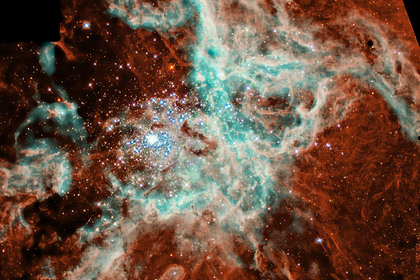Scientists at the University of Leeds have linked the appearance of life on Earth with cosmic dust 
The earth. The role of the smallest particles entering the planet's atmosphere was revealed by scientists at the University of Leeds (UK), who published the results of the study in the Journal of Geophysical Research: Space Physics.
4.5 billion years ago, all phosphorus, which participated in the formation of the Earth, had to descend to the molten core, so the phosphorus available to living organisms must have an external source. It was believed that they could potentially be meteorites, but new data suggests that phosphorus was associated with the smallest particles of cosmic dust. Chemical reactions in the planet's atmosphere have produced phosphites and phosphates that can be absorbed by living organisms.
As dust particles enter the atmosphere, friction in the air causes a process of melting and evaporation known as ablation. Scientists have modeled a network of chemical reactions that create molecules of biologically available phosphorus during ablation. To do this, it was necessary to combine the results of laboratory studies with theoretical predictions for reactions that have not yet been studied in the laboratory. The researchers then incorporated the network of reactions into a global climate model that takes into account atmospheric transport.
Scientists predicted that the northern Rocky Mountains, the Himalayas and the southern Andes are the regions that can receive the most phosphorus in a year. In addition, the hypothesis suggests that a thin layer of phosphorus-containing molecules is formed at an altitude of 90 kilometers above the surface. Future research should confirm or deny the existence of this layer.